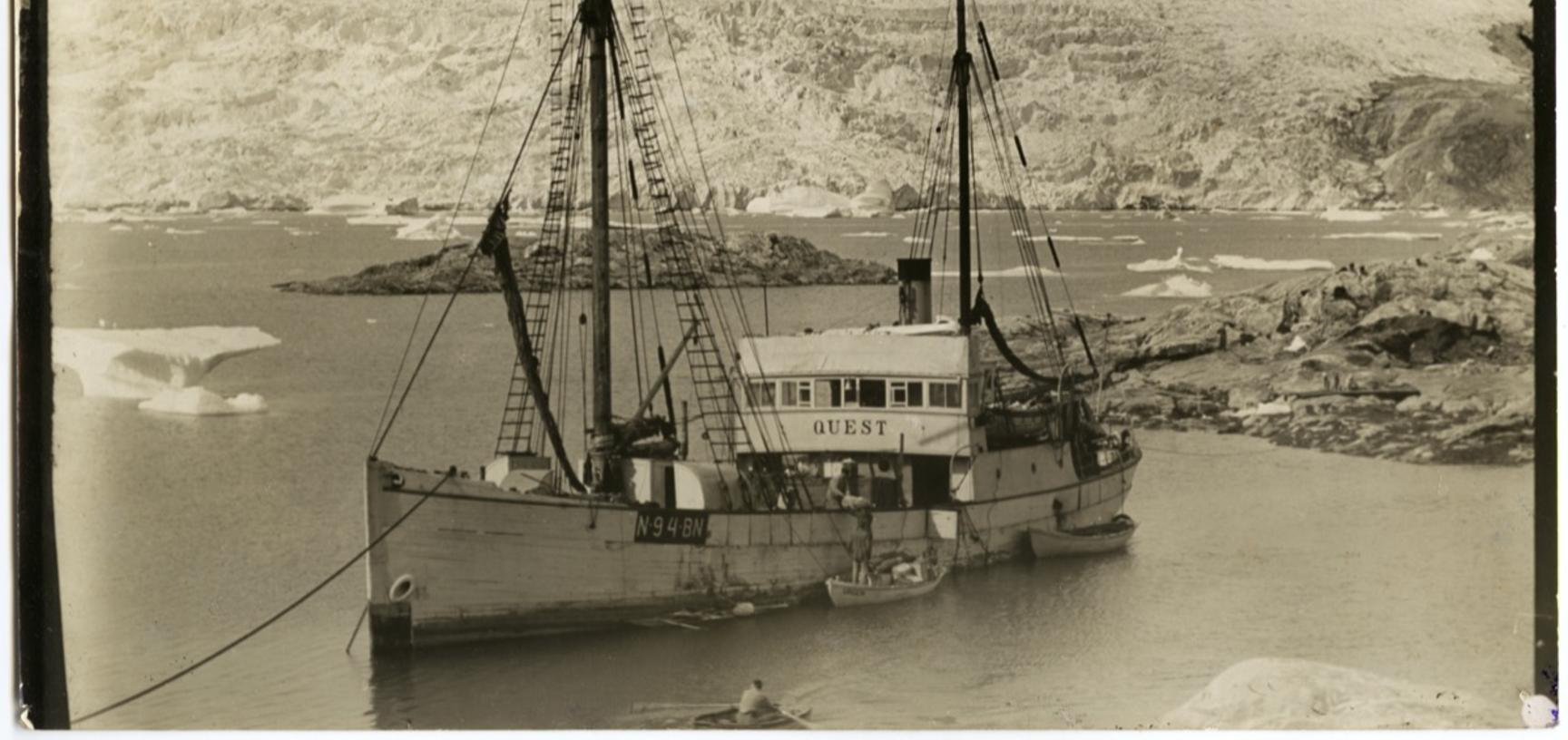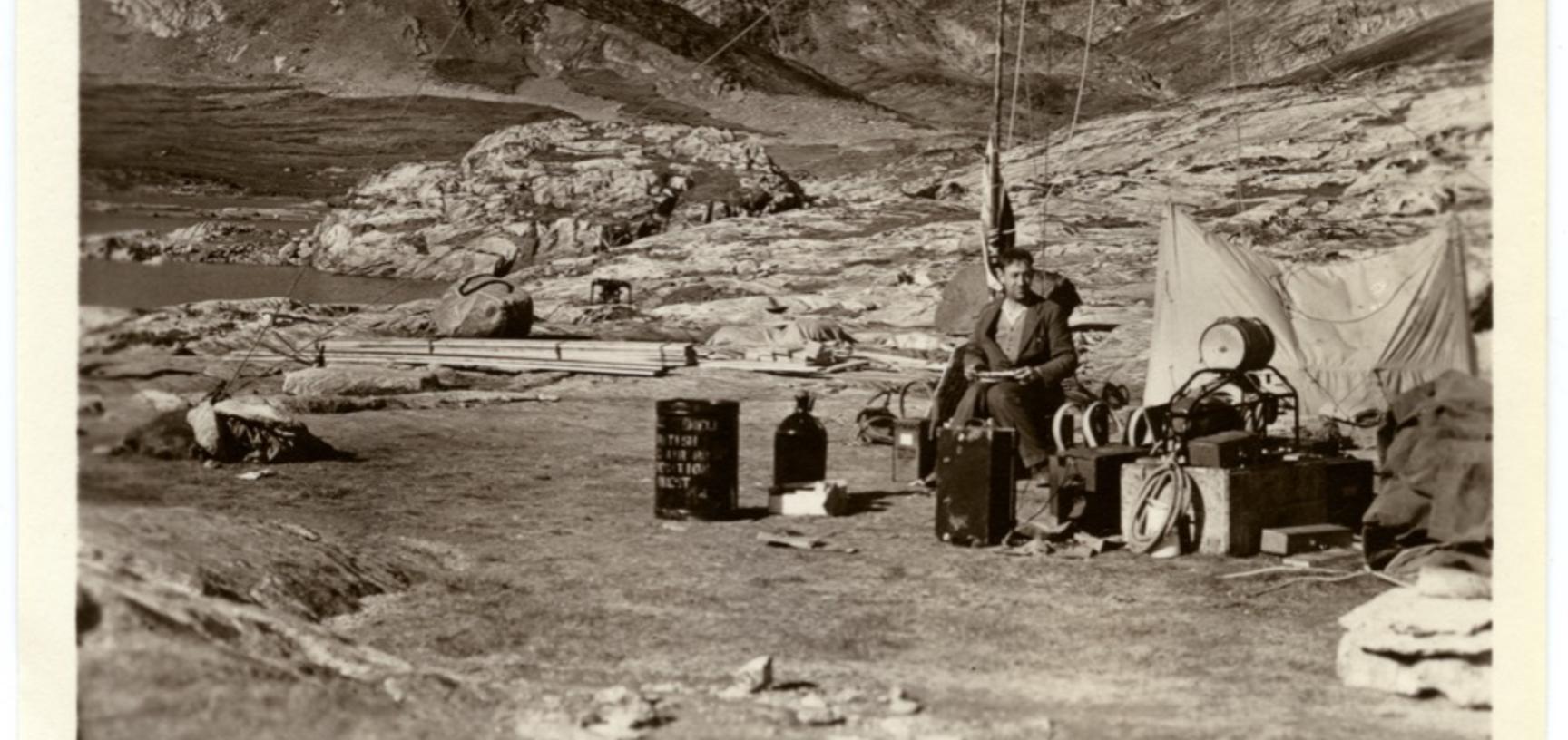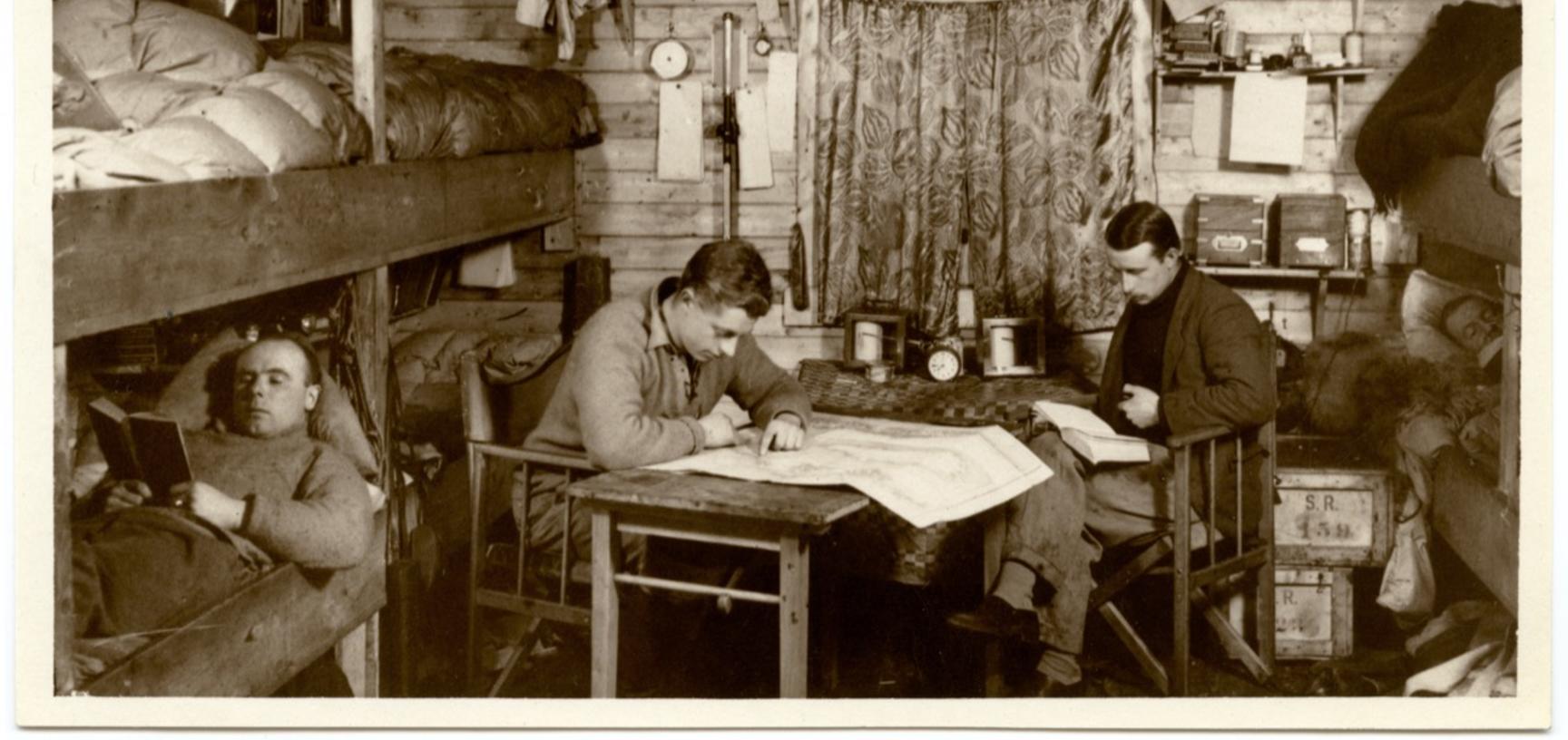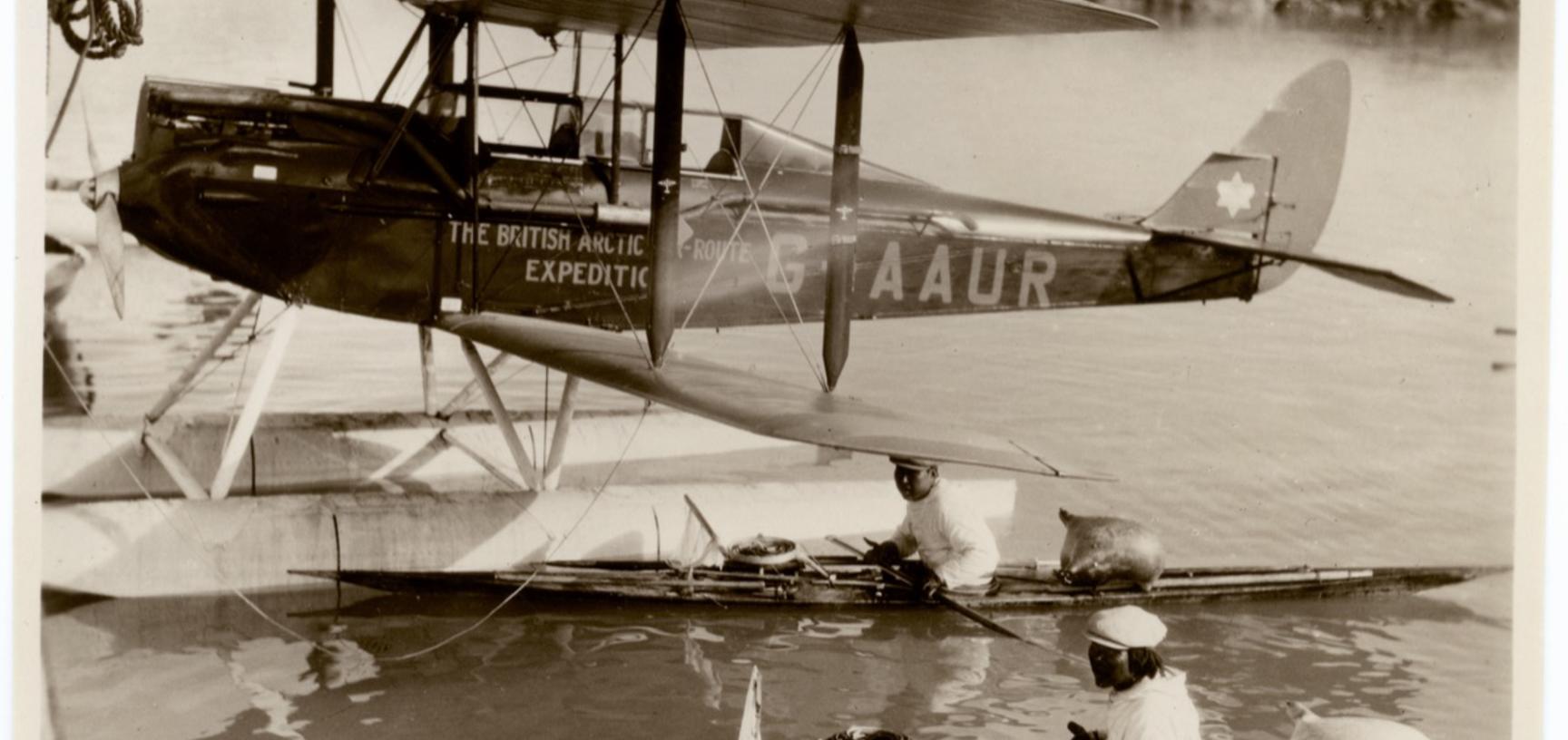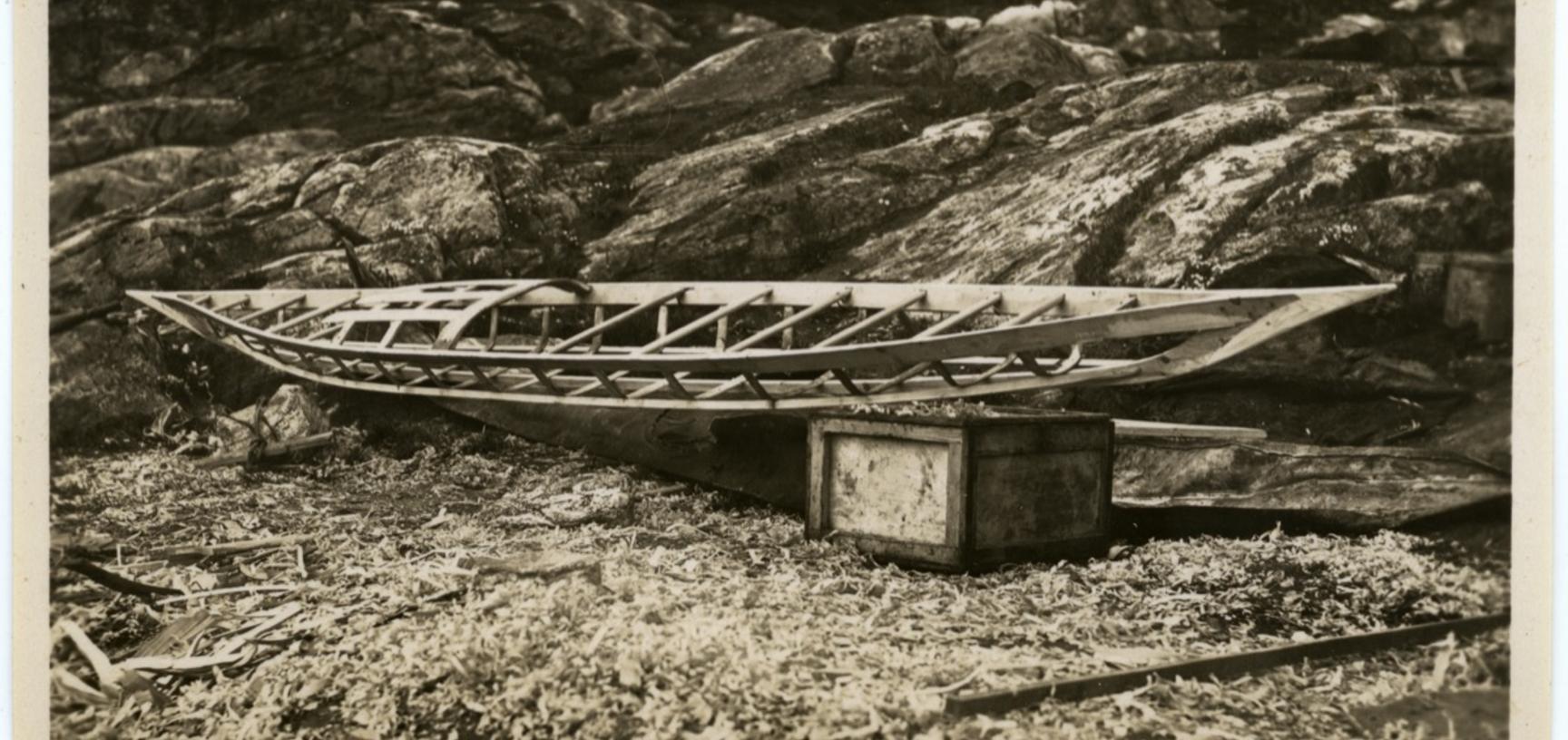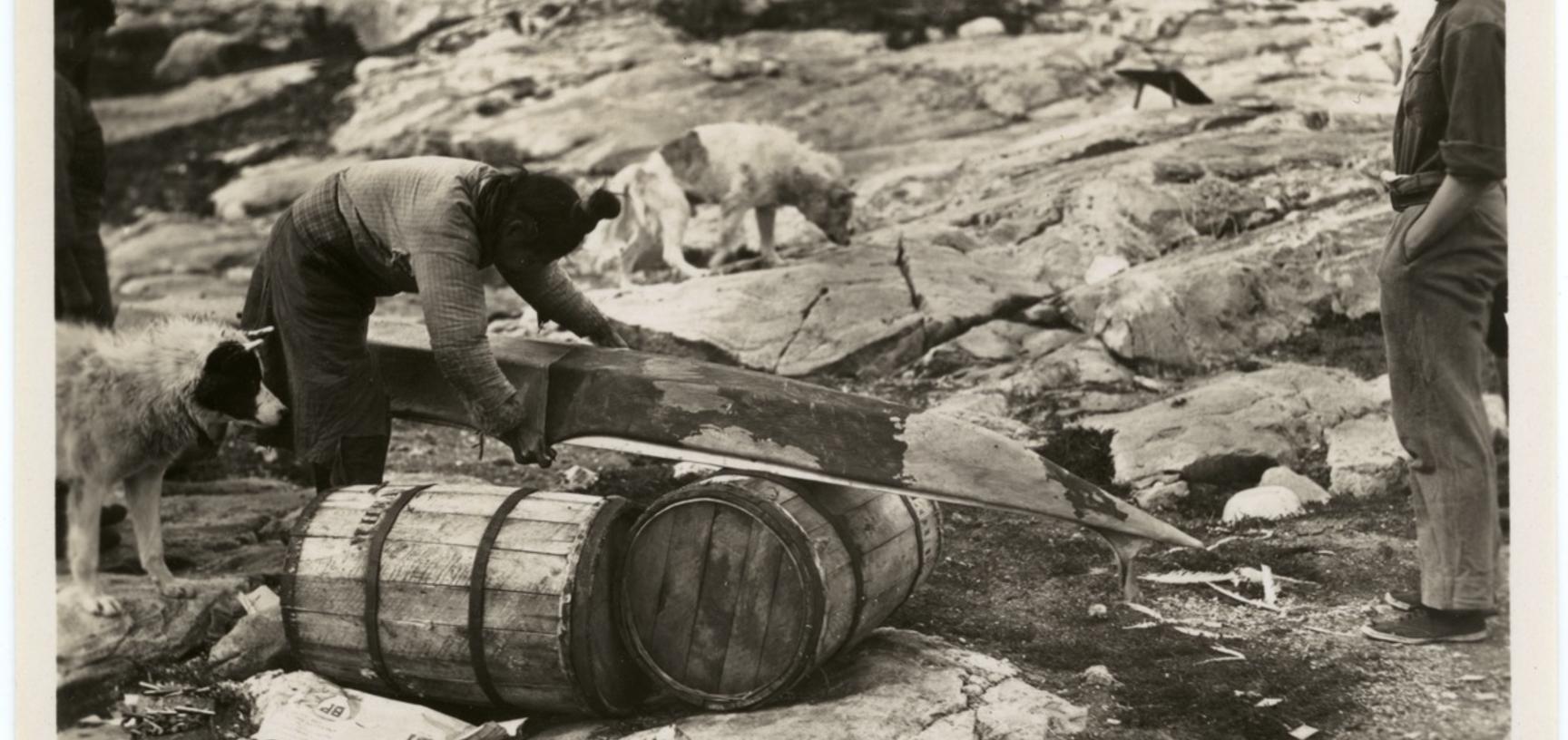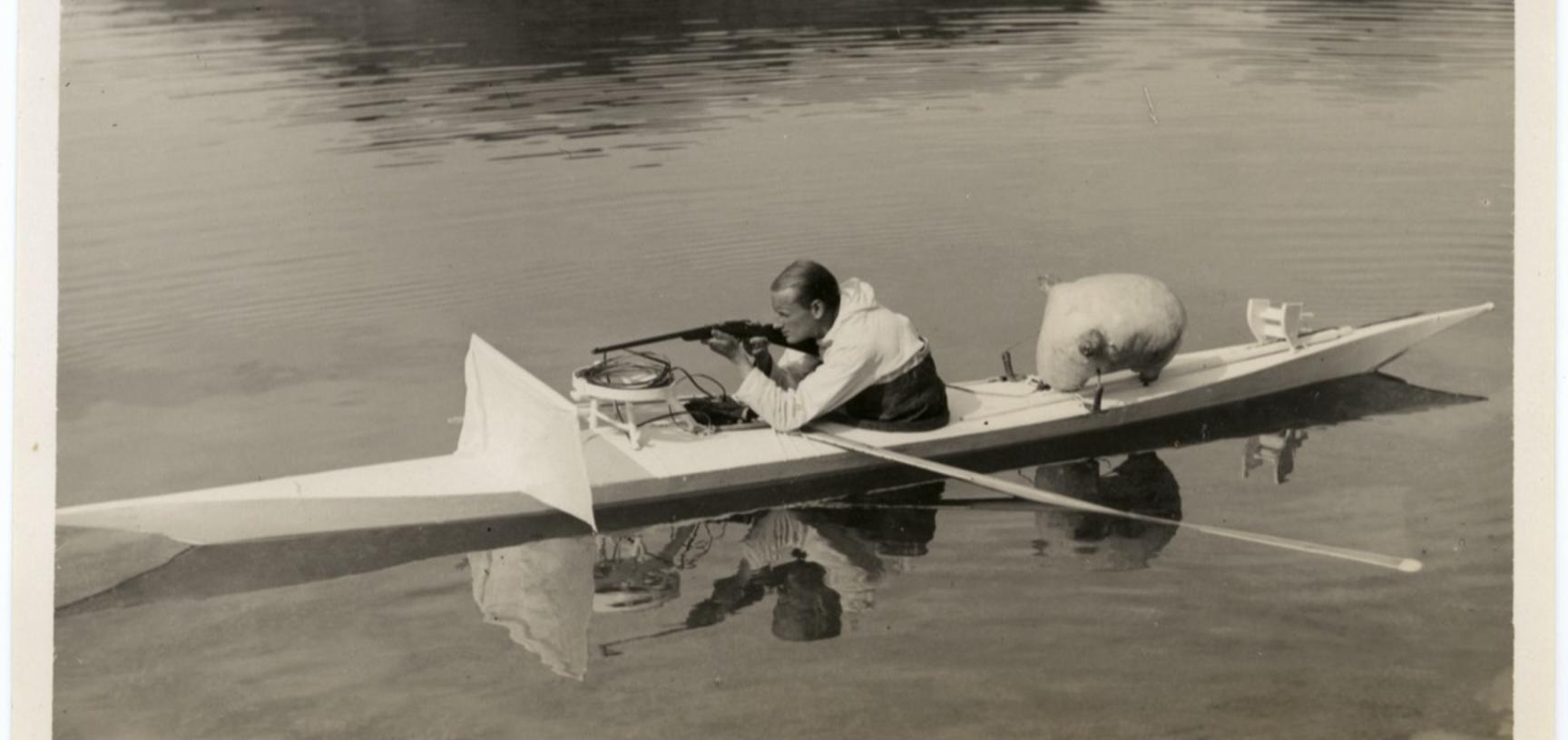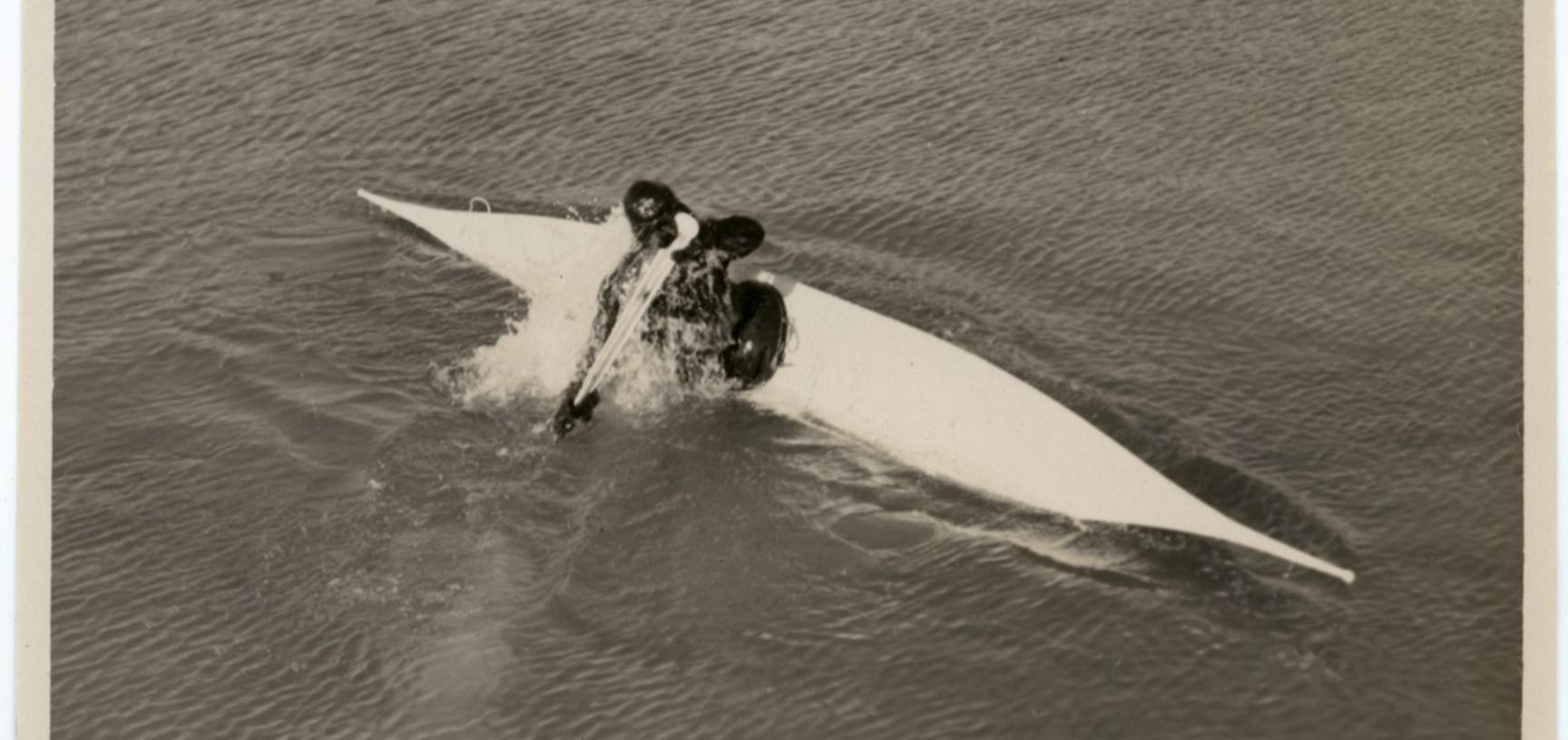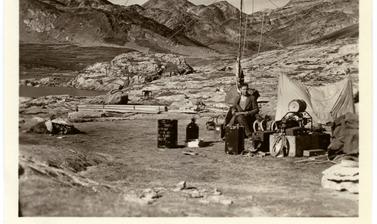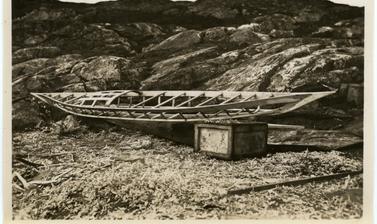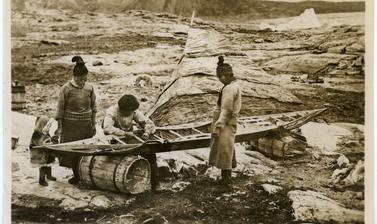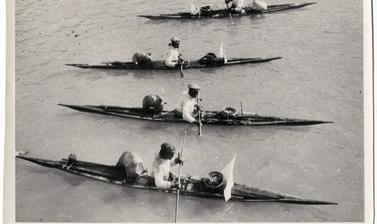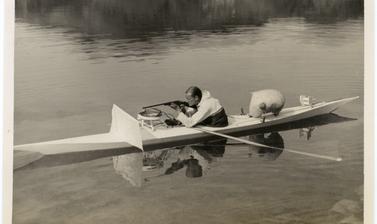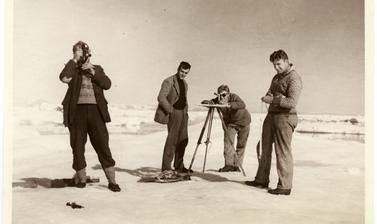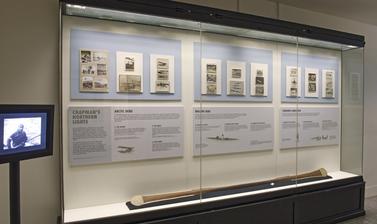Chapman’s Northern Lights: Arctic Skies, Rolling Seas, Changing Landscapes
Among the Pitt Rivers Museum’s collections are over three thousand photographs from Frederick Spencer Chapman (1907–1971). The majority of these are from the 1930s, when Chapman participated in a Himalayan climbing expedition, and served as private secretary on the British Political Mission in Tibet. Many of these photographs featured in The Tibet Album project in 2003–6. Before he travelled to the Himalayas, Chapman spent several years in Greenland as a member of the British Arctic Air-Route Expedition (BAARE) in 1930–31. He wrote the official account for this expedition, Northern Lights (1934), and a film of the same title was also produced. This Archive Case display presents a selection of the photographs taken during his time on this expedition, under the tripartite theme of sky, seas and land.
Chapman joined the expedition shortly after graduating from St John’s College, Cambridge. The negatives of the expedition, along with other items used by the BAARE team, are now held in the Scott Polar Research Institute at the University of Cambridge. Each expedition member received printed copies of the photographs taken, and the prints now in the Pitt Rivers Museum’s collections are Chapman’s personal copies, which were donated among his other photographs, along with a few film rolls, in 1994. Chapman arranged his prints into an album that he likely referred to when writing the book Northern Lights. Below, a five-minute trailer of the film, also called ‘Northern Lights’, highlights moments of the full-length film (51 minutes, available to view in two parts on the film collections page) that relate to the themes of the display.
Arctic Skies
In 1930 Chapman joined a team of fourteen men on the year-long British Arctic Air-Route Expedition, led by H. G. ‘Gino’ Watkins. The group aimed to survey the mountainous central ice plateau and eastern coast of Greenland for a potential new flight path between Europe and North America. Prints in the album depict the small De Havilland Moth biplanes used on the expedition, shown with different landing gear of skis and water floats. The arduous weather conditions along with the quick movement of floating sea-ice made it difficult to predict landing conditions, adding to the danger of flying. One photograph by Henry Iliffe Cozens even shows one plane buried in snow after a blizzard. The planes were used for taking aerial photographs to aid survey work done from the ground. However, the majority of the expedition journeys were conducted by travelling on water and across land.
Rolling Seas
The British Arctic Air-Route Expedition group arrived in Greenland on the Quest, a steamship best known for its use in the Shackleton-Rowett Expedition to Antarctica in 1921–22. In addition to arriving in Greenland by sea, and using the Arctic waters as landing strips, the expedition used smaller vessels for navigating along the river routes and coastline. Although they took two motorboats with them, Gino Watkins attributed his success on the expedition to his kayaking skills learned from local people, East Greenland Inuit, including hunting techniques and the survival skill of the kayak roll. Like many Arctic expeditions, in addition to their imported equipment, the BAARE members depended on the local knowledge of indigenous populations. Such contributions have often been overlooked in dominant narratives that emphasize British discovery and the heroics of exploration.
This display aims to highlight the importance of this contribution, from the construction of kayaks by local Inuit to survival skills such as hunting techniques and the kayak roll. Learning to hunt from a kayak using local expertise meant reducing the amount and weight of food supplies that needed to be carried, allowing more room for equipment. The kayak roll was an exercise to enable kayakers to learn how to right themselves quickly if capsized in the freezing waters. Despite excelling in kayaking, expedition leader Gino Watkins drowned while out in his kayak on the follow-up Arctic expedition in 1933–34.; in the full-length version of the film, ‘Northern Lights’, the last scene shows the cross that Chapman erected in his memory.
Changing Landscapes
On arrival in Greenland, the team set up a base hut for their supplies not far from the settlement of Angmassalik (now Tasiilaq). Different scientific excursions were made during the total length of the expedition, including, for example, along the coastlines and up into the mountainous plateau. While water navigation was possible along the river ways and coastline, when the expedition members ventured inland their main transportation methods involved dog-pulled sledges. The rough terrain and unstable surface of melting snow and ice added extra difficulty to the team’s navigation of the landscape and the scientific aims of the expedition. Although no equipment used in this expedition is held at the Pitt Rivers Museum, similar sledges from Greenland can be viewed on the opposite railings from the Museum’s Clore Learning Balcony, along with many other items from Greenland and the wider Arctic region.
https://player.vimeo.com/video/178037598?color=73070a&title=0&byline=0&portrait=0
Chapman’s Northern Lights (trailer) from Pitt Rivers Museum on Vimeo.
Acknowledgements and Credits
- Exhibition curated by Katherine Clough and Philip Grover
- Conservation by Andrew Hughes
- Print design by Katherine Clough
- Case installation by Jon Eccles
- Special thanks to Naomi Boneham and Lucy Martin
You can watch the full-length film of ‘Northern Lights’, a record of the British Arctic Air-Route Expedition to Greenland, digitised from the Pitt Rivers Museum’s original reels, in two parts here (part one) and here (part two).


